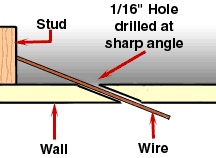I've been without a handrail on my stairs ever since I moved into my house. My problem is that I'm having trouble finding the studs to anchor the handrail into b/c the wall is lath and plaster so a stud finder doesn't work. I've tried tapping the wall to find the studs but no luck, also tried finding where the trim is nailed to the wall hoping it's nailed into the studs but no luck there as well.
Any help would be appreciated.
Any help would be appreciated.
Last edited:






